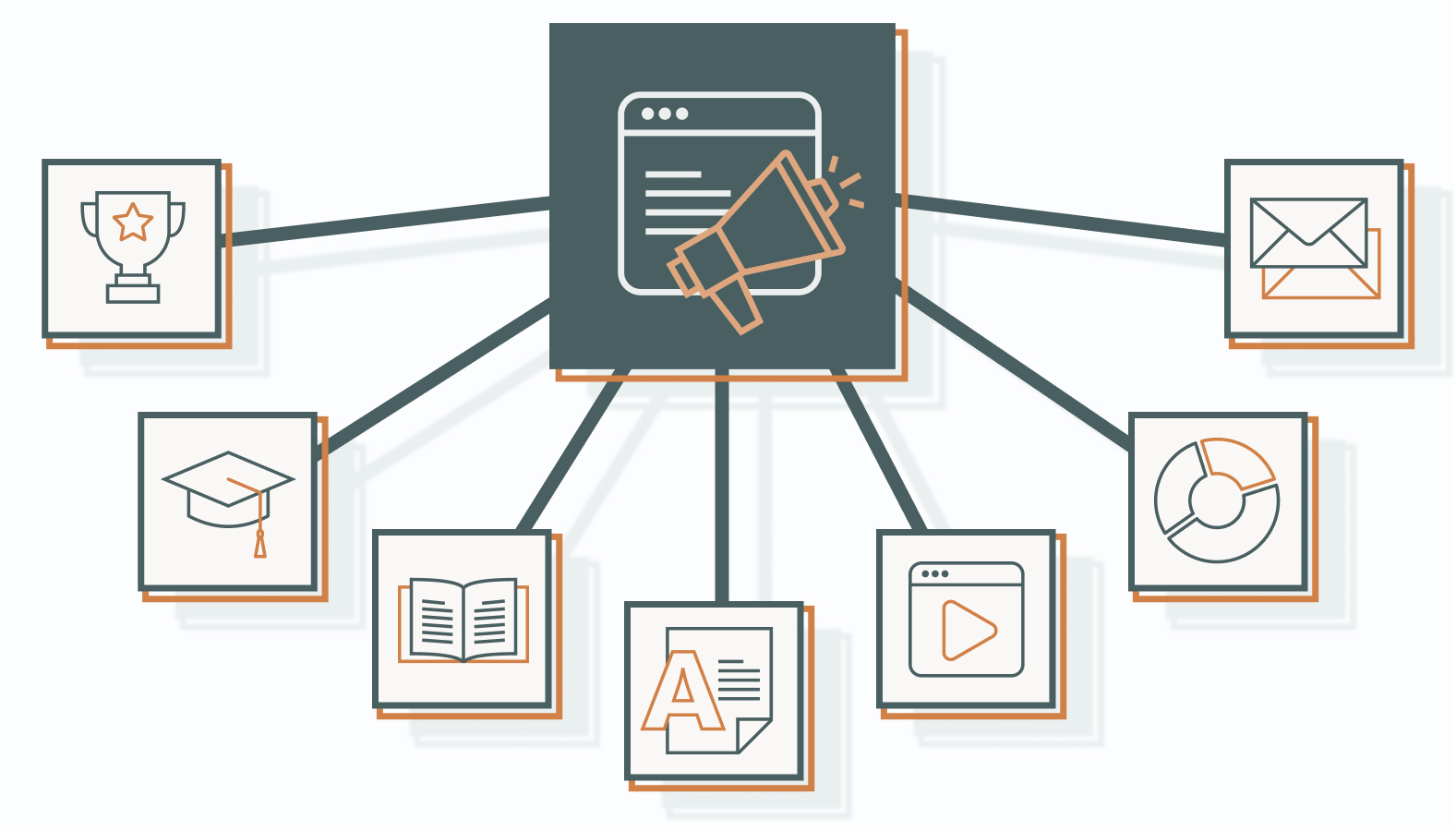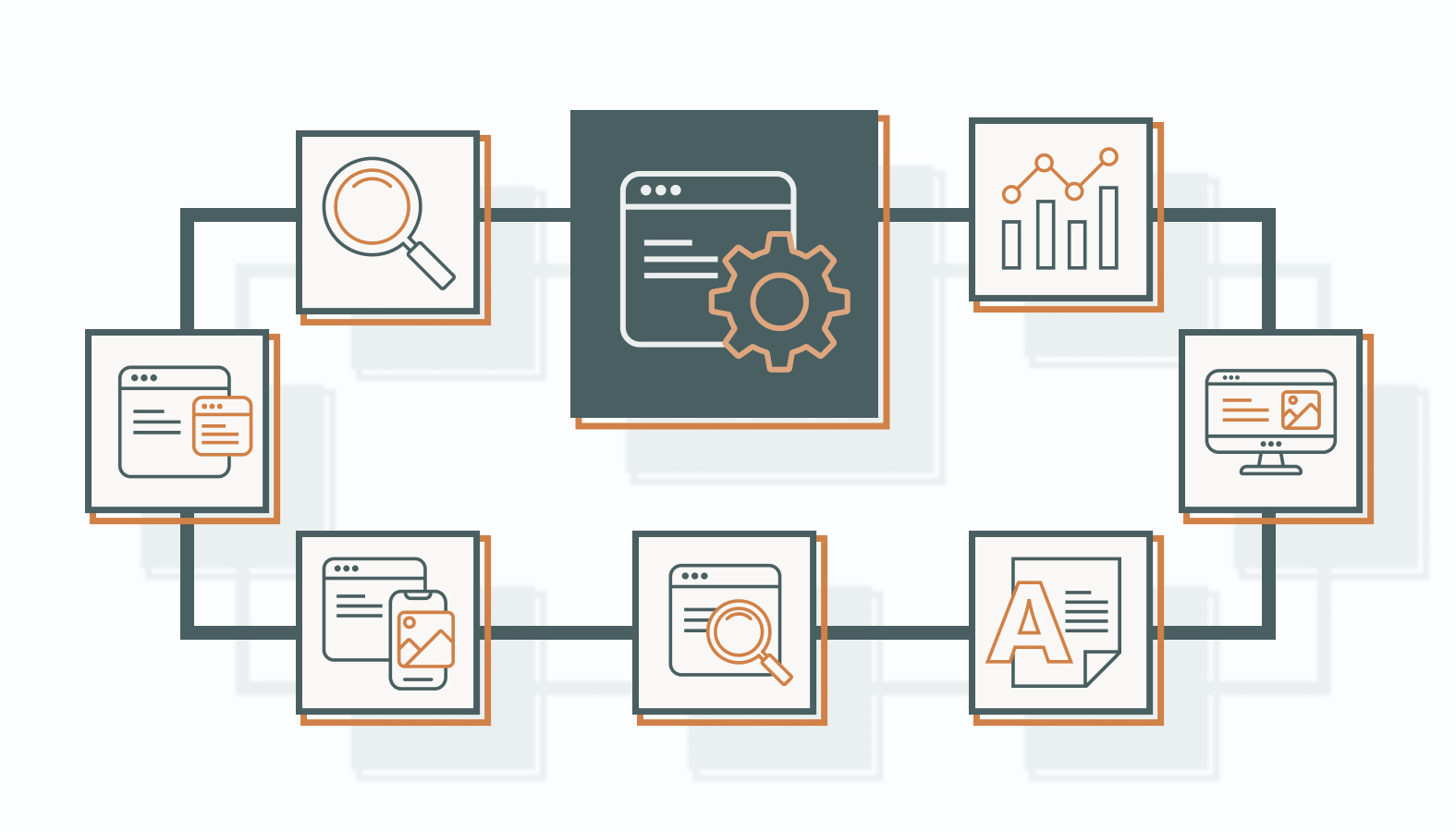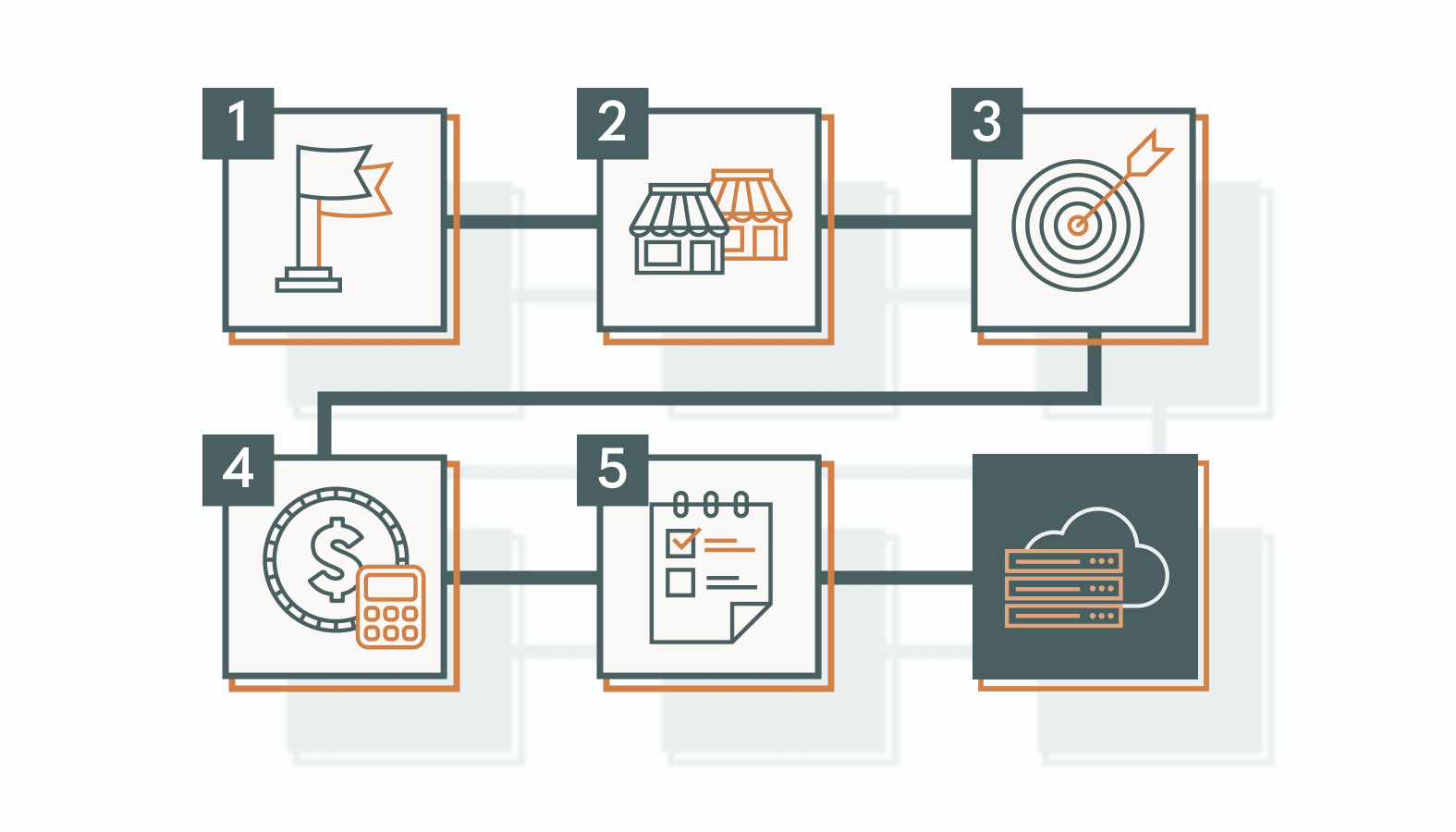SaaS content marketing has evolved. A few blog posts and a sprinkling of keywords won’t cut it anymore. Buyers are sharper, faster, and far less forgiving of wasted time.
In today’s market, surface-level content gets ignored. Templates, keyword stuffing, and vague positioning repel serious prospects. Meanwhile, top-performing companies are playing a more strategic game.
The gap? Most teams are either stuck in entry-level tactics or drowning in complexity without measurable impact. Churning out more content won’t fix that. You need aligned content that drives pipeline, retention, and long-term value.
That’s what this article delivers. We’ll discuss high-leverage tactics the top SaaS players use: advanced personalization, data-driven content strategy, and a planning cadence that directly tracks business outcomes.
Time to move beyond the content treadmill and focus on what delivers measurable impact.
Evolution of SaaS Content Marketing
SaaS content marketing has come a long way. What started as basic blog posts and email newsletters has become a sophisticated growth engine that fuels acquisition, retention, and market leadership.
In the early days, content was functional: it answered questions, shared updates, and educated. However, as the digital environment matured, content strategy evolved with it.
Technology played a central role in this shift.
- Data analytics unlocked sharper audience insights, making personalization more precise and outcomes more measurable.
- Automation tools streamlined distribution, allowing consistent and timely engagement with potential customers.
- AI and machine learning took it further, predicting behavior, surfacing patterns, and enabling content that speaks directly to a customer’s current stage of the journey.
Today, content marketing is a significant part of the SaaS playbook. It’s expected to drive results, align with business objectives, and flex with evolving tech stacks.
From Basics to Advanced Strategies
The path from foundational tactics to advanced frameworks reflects the industry’s growing demand for efficiency, scale, and real results.
Fundamental Strategies
Every successful SaaS content engine starts with the essentials: audience clarity, relevance, and value. To obtain these, a content plan begins with these basic strategies:
- Accurate buyer personas. Understanding your audience and what they need allows you to create content that truly resonates. Know your customers’ goals, challenges, and how they evaluate solutions.
- Valuable content that earns attention. Whether it’s a blog, webinar, or white paper, the content you craft must solve real problems and address your audience’s pain points.
- Distribution isn’t an afterthought. Getting content in front of the right people means optimizing across channels, including social, email, and strategic partnerships.
Advanced Techniques
Once you’ve mastered the basics and the groundwork is solid, it’s time to scale your SaaS content marketing efforts with advanced techniques.
By utilizing machine learning, businesses can analyze vast amounts of data to uncover trends and insights that inform content strategy.
Machine learning gives you a path for deeper segmentation and dynamic content experiences, so you’re not just broadcasting information but also curating personalized journeys tailored to individual users. The result? Higher engagement, better conversion rates, and content that performs like a sales team extension.
Cross-channel marketing ties it all together. Unified messaging across every platform reinforces brand recognition and customer trust. Done right, this approach transforms content from a support function to a growth multiplier.
Essential Components of Effective SaaS Content
In SaaS, content marketing is no longer just a box to check. It’s a competitive advantage, separating the brands that talk from the ones that win.
Strong content attracts attention, builds trust, drives engagement, and turns prospects into loyal customers. Knowing what makes content effective is key to long-term growth.
Content Types That Resonate with SaaS Audiences
Choosing the correct content format is key to meeting audience expectations and driving results across the SaaS customer journey. Each type serves a purpose—from building trust to converting leads.
Here’s how to make every format work smarter for your brand.
1) In-Depth Case Studies and Success Stories
Case studies give your product proof.
Real-world examples demonstrate how your solution solves specific problems, building trust with prospects who want evidence, not theory.
Go beyond the metrics by adding context, highlighting the pain point, and showing the before-and-after clearly.
Success stories also humanize your brand, spotlight customer wins, and offer tangible outcomes that drive decision-making.
2) Educational Webinars and Workshops
Webinars and workshops are direct lines to your audience. They showcase your expertise, highlight your product’s strengths, and allow prospects to engage in real time.
Lean into interactivity, such as Q&As, polls, and live demos, so it feels less like a pitch and more like a value-packed session. When done right, these activities position your team as the go-to experts while capturing warm leads in the process.
3) Insightful White Papers and eBooks
When your audience is ready for depth, white papers and eBooks deliver. These assets unpack complex topics, provide strategic insights, and show that your team knows the terrain.
White papers and ebooks are ideal for educating stakeholders, nurturing leads, and driving authority in long-consideration cycles.
4) Engaging Blog Posts and Articles
Consistent blog content keeps your brand top-of-mind and fuels SEO. It answers questions, addresses pain points, and helps you stay relevant in the eyes of both search engines and customers.
Whether you’re publishing tactical how-tos or thought leadership, each post should serve a purpose: to inform, inspire, or influence the following action.
5) Interactive Product Demos and Tutorials
If prospects can’t see your product in action, they’ll struggle to picture it solving their problem. Demos and tutorials eliminate guesswork. They showcase usability, features, and value, building confidence in your solution.
Guided experiences, quick-start videos, or interactive sandboxes are excellent examples of this content type.
6) Compelling Infographics and Visual Content
Visuals speed up understanding. Infographics break down technical concepts and give your content legs on social platforms. They’re shareable, skimmable, and make your messaging stick.
Use infographics and visual content to simplify complex workflows, summarize reports, or bring thought leadership to life in less than a scroll.
7) Personalized Newsletters and Email Campaigns
Targeted email campaigns keep your audience engaged between touchpoints.
Personalized content increases relevance, drives open rates, and builds stronger relationships over time. Use segmentation, behavior-based triggers, and clean design to keep emails actionable instead of ignorable.
If done well, email campaigns become a high-leverage channel for retention and conversion.
Content Optimization and SEO Best Practices
Optimizing content for both search engines and human readers is critical for maximizing visibility, engagement, and long-term ROI.
In the SaaS space, where competition is high and buyer journeys are complex, applying SEO best practices ensures your content reaches the right audience at the right moment while still delivering genuine value.
Conducting Effective Keyword Research
Identifying the right keywords is the first step in aligning content with audience search intent.
Go beyond high-volume terms. Look for keywords with transactional or informational value that match your funnel stages.
Incorporate competitor research and user behavior insights to shape content that ranks and resonates.
Enhancing On-Page SEO Elements
Optimizing on-page elements like headers, images, and URLs can significantly improve search engine visibility.
Use keyword-rich H1s and H2s to structure content logically. Add descriptive alt text to visuals, and keep URLs clean and concise.
These well-thought-out but straightforward adjustments improve accessibility and how search engines interpret your content’s relevance.
Optimizing for Mobile and User Experience
Mobile-first is no longer optional; it’s the baseline. Ensure your content loads fast, looks great, and functions smoothly across devices.
A responsive design, scannable formatting, and intuitive navigation all contribute to a better user experience and lower bounce rates, which signals quality to search engines.
Utilizing Technical SEO Techniques
Technical SEO is the invisible scaffolding behind discoverable content.
Prioritize fast page load speeds, secure connections (HTTPS), and a logical site structure with clean internal links.
Use schema markup where applicable to enhance rich results and improve how your content appears in search.
Crafting Compelling Meta Descriptions and Titles
Your title tag and meta description are your content’s first impression in the SERP. Make them count. Use clear, benefit-focused language that mirrors search intent and compels clicks.
Don’t bait people. Make sure your titles and descriptions align with what’s actually on the page to build trust and improve dwell time.
Leveraging Internal and External Linking Strategies
Links should be more than navigation. Use them as strategic signals.
- Internal links keep users engaged by guiding them to related resources and distributing link equity across your site.
- External links to reputable sources add credibility and context, which search engines reward. Just keep it relevant and intentional.
Analyzing and Adapting to SEO Performance Metrics
SEO is not a one-and-done job.
Regularly review key metrics — organic traffic, bounce rate, keyword rankings, time on page — to understand what’s working and where to pivot.
Use tools like Google Search Console and GA4 to uncover trends and continually refine your strategy with data-backed decisions.
Crafting Your 2025 SaaS Content Marketing Plan
A high-performing SaaS content marketing plan is built to scale, supports fundamental business objectives, and stays responsive as market dynamics shift.
Here’s how to build your own plan:
Align Content with Core Business Goals
Content creation should always be guided by clearly defined business outcomes. Before building your content strategy, establish the goals that matter most to your organization, such as improving brand visibility, generating qualified leads, and increasing long-term customer value. Every piece of content should directly support one or more of these outcomes.
Involve key stakeholders from the start to ensure your content efforts are aligned with broader business initiatives.
Marketing objectives should reflect company-wide goals, not operate in isolation. Revisit your content priorities quarterly to stay responsive to internal shifts and external market changes.
Know the Market, Know the Buyer
A strong content strategy begins with deep, data-driven insight. Research market dynamics, emerging trends, and competitor movements. Tap into customer interviews, surveys, CRM analytics, and independent research to gather meaningful feedback and behavioral patterns.
Use this information to build detailed buyer personas. These should go beyond surface-level demographics to capture your audience’s motivations, frustrations, and decision-making triggers.
Understanding what your buyers are trying to solve and what obstacles they face will enable you to create content that resonates and drives action.
Set Strategic, Measurable Goals
Defining clear, measurable goals brings structure to your content strategy.
Apply SMART criteria — specific, measurable, achievable, relevant, and time-bound — to establish objectives that can be tracked and evaluated. For example, rather than following vague targets, the aim is to increase organic website traffic by 25% over six months.
Balance your strategy with a mix of short-term goals that deliver quick wins and long-term goals that support sustained growth. While content marketing often requires patience, achieving early results builds confidence and keeps momentum high across the team.
Allocate Budget and Resources with Intent
Even the best content ideas need the proper support to succeed. Start with a comprehensive audit of your current resources, including team skills, tools, and operational systems.
Identify your strengths and where you need to fill the gaps. Assign clear roles, establish efficient workflows, and ensure your technology stack can support planning, execution, and performance tracking.
Treat your budget as a strategic lever, not just an expense. Factor in all critical areas: content creation, promotion, tools, measurement, and contingency planning.
Track your spending regularly and be prepared to shift resources toward higher-performing efforts. A flexible approach helps you stay efficient and results-driven.
Execute, Track, and Improve the Plan
With strategy and resources in place, focus on consistent execution. Build a content calendar that aligns with your campaign timelines and sales goals. Use project management tools to assign responsibilities, maintain visibility, and ensure accountability across your team.
Analytics will help you stay on track. Monitor key performance indicators such as engagement rates, conversion metrics, and pipeline contribution. Analyze the results to understand what’s resonating with your audience and where improvements are needed.
Based on analytics feedback, refine your content formats, distribution channels, and publishing schedule. The most effective teams treat execution as an ongoing improvement cycle instead of a one-and-done task.
Evaluating and Boosting SaaS Content Effectiveness
Smart SaaS marketers don’t guess. They measure, analyze, and optimize. Content that performs well results from consistent, data-driven refinement.
When strategy is aligned with real user behavior, every asset becomes a lever for deeper engagement, higher conversions, and stronger customer loyalty.
Key Metrics and Performance Indicators Worth Tracking
Before optimization can happen, you need a clear picture of performance.
Metrics such as conversion rates, average time on page, bounce rates, and lead velocity offer more than surface-level insights. They act as diagnostic tools, revealing what resonates, what underperforms, and where your content might be leaking opportunity.
Treat these KPIs (key performance indicators) as a regular health check, not a retrospective.
Set Benchmarks and Monitor Regularly
Setting benchmarks gives your strategy structure; they are the standards by which you evaluate momentum and effectiveness.
Whether you’re focused on increasing inbound leads, boosting engagement metrics, or improving SEO visibility, defined performance targets clarify where you’re headed and how fast you’re getting there.
With benchmarks in place, consistent tracking becomes a proactive management tool.
Analytics for Actionable Insights
Analytics only becomes valuable when it informs action.
Tools like Google Analytics, Mixpanel, and HubSpot offer behavioral insights that map how users interact with your content. They help you pinpoint drop-off moments, identify sticky topics, and highlight conversion drivers.
Use this data to make smarter editorial decisions, refine user journeys, and develop content that serves both user needs and business objectives.
Keep Content Agile with Ongoing Refinement and Adaptation
The SaaS market evolves quickly, and static content is often overlooked. Regular audits can help you identify outdated messaging, irrelevant assets, or performance gaps.
Integrating real-time performance data and audience feedback into your content refresh process ensures your strategy remains responsive and aligned with current buyer needs.
Let Users Guide You with Feedback
User feedback is one of your most direct sources of qualitative insight.
Whether through surveys, in-app feedback, or social media, these inputs highlight what your audience values and where your content may be falling short. Recurring themes in user feedback often point to underlying issues or untapped opportunities.
Build a feedback loop into your content process, and let it shape strategy and execution.
A/B Test Ruthlessly, Improve Relentlessly
A/B testing should be a foundational practice, not an afterthought.
Focused experimentation — changing one element at a time, whether it’s a CTA, headline, layout, or visual — produces insights you can confidently act on.
This controlled approach removes ambiguity from decision-making and gives your team the data needed to create sharper, more effective content with each iteration.
Embracing the Future of SaaS Content Marketing
The SaaS content landscape isn’t slowing down—it’s getting sharper, smarter, and more demanding. This guide has mapped the shift from basic content tactics to a performance-focused, personalized, and scalable content engine.
You’ve seen how modern SaaS leaders leverage strategic planning, audience insight, and data-backed iteration to turn content into a business growth driver.
Moving forward, the advantage belongs to teams that stay agile, test often, and align content to outcomes. That means less fluff and more focus. It means leading with value, doubling down on what works, and adapting faster than your competitors.
Whether you’re refining your current strategy or building from scratch, the next step isn’t more content. Your goal is to craft smarter content. Keep your sights on the metrics that matter, stay tuned to your buyer’s evolving expectations, and let content pull its weight across the entire funnel.
Let’s Talk About Smarter SaaS Content
If your content engine could use a strategic tune-up (or a complete overhaul), we’re here for it. No generic advice, no pushy sales talk. Just an honest conversation about where you are, what’s working, and where your SaaS content can go next.
Our team brings decades of experience helping SaaS brands turn content into tangible results. If you’re ready to cut through the noise and build a content strategy that delivers, let’s talk.
Schedule a candid conversation with one of our experts for a quick, no-pressure strategy chat. We’ll bring the insights, and you bring the ambition.










